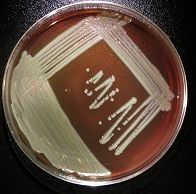Article
Dozens Ill, 17 Die of Blood Infection in Midwest
Author(s):
A mysterious microbe is stalking the elderly in the Midwest. The CDC and local health officials are stumped.

A mysterious microbe is stalking the elderly in the Midwest.
Known as Elizabethkingia anophelis, the bacteria has killed 17 people in Wisconsin and Michigan since November.
Including one fatal case in Michigan, there have been 54 confirmed cases—about 10 times more in a few months than would be expected in one state in a year. Another five cases are listed as suspected or under investigation.
Investigators are stumped.
Though Elizabethkingia organisms are easy to find in the environment, they are not common in humans.
“It’s unusual—most physicians don’t even learn about it in their medical training—the sort of thing that would have infectious disease experts reaching for the books,” said infectious disease and public health expert William Schaffner, MD, Professor Preventive Medicine and chairman of the Department of Preventive Medicine at Vanderbilt University School of Medicine in Nashville, TN.
The US Centers for Disease Control (CDC) said it too has more questions than answers about the outbreak.
The Wisconsin cluster is the first of its size or of its type, said Michael Bell, the agency’s Deputy Director of Healthcare Quality Promotion.
“We see a half dozen Elizabethkingia infections per year in every state across the countr,“ Bell said in a recent NPR interview, including infections from more than one species of Elizabethkingia, “But we don’t see 54 cases of the identical organism causing an outbreak.”
When they do occur, infections of gram-negative bacteria like E. anophelis (CDC photo) and the almost identical E. meningoseptica tend to break out in hospitals and nursing homes where they are often devastating.
The CDC investigators, working with state health officials in Wisconsin and Michigan, know this bacterium does not spread directly between people, but can be picked up from surfaces. Somehow it ends up in the blood. It also seems to affect only patients who have comorbidities and are elderly.
The biggest puzzle is how people in 12 different Wisconsin counties and two states got infected, or what the common link is in the cases.
“We don’t know yet,“ said a CDC spokeswoman, adding that several pathways-- including whether it could have been a contaminated product that was injected—are being investigated. The CDC also wants to know if the bacteria may be crossing from the GI tract, or whether it may be moving from other sites of colonization, she said.
Investigators have “looked at tap water, consumer products, medical products--so far nothing has lit up as the definitive source,” Bell said.
They know the bacteria can be hard to kill.
Their unique layer of membrane that resists the deep purple of a gram stain also makes them resistant to many antibiotics. (Information on those that work is available on the Wisconsin health department’s website.)
Their tendency to cluster in slimy biofilms leaves them stubbornly coating medical devices through the disinfection process. Colonies have been found in chlorinated sinks and in one case living inside containers of disinfectant.
Nor are they hard to find in nature. The bacteria live in fresh and salt water, on tree leaves and roots as well as in insect and animal digestive systems.

As for their curious name, it came from their discoverer, Elizabeth O. King, (CDC photo at right) an expert in gram-negative bacteria from Atlanta, GA.
While stationed at the CDC in 1959 she was studying pediatric meningitis. She found some cases involved an organism she isolated and christened Flavobacterium meningosepticum.
After her death the bacterial class was renamed and the meningitis organism became Elizabethkingia meningosepticum. The organism now being investigated in Wisconsin, E. anophelis, is a close relation discovered in 2011.
Due to technological advances, the CDC is learning that about half the infections traced to Elizabethkingia organisms over the years that were identified as the meningitis strain are actually the anophelis strain, said the CDC’s spokeswoman
Knowing that it had an unusual outbreak and needed help with field and lab investigations, Wisconsin in February asked the CDC for assistance.
The CDC alone has the equipment to do the testing that can distinguish between to two pathogens’ protein profiles. The CDC uses a mass spectrometry method MALDI-ToF (matrix-assisted laser desorption/ionization time-of-flight), as well as optical mapping of the bacterial genome, the spokeswoman said.
Vanderbilt’s Schaffner says the mystery of how the bacteria turned up in patients’ blood will only be solved through what he calls “shoe-leather epidemiology”.
“Investigators will be talking to patients who have had complicated medical courses, poring over lengthy treatment records, and having sensitive conversations with family members who may be grieving the loss of a loved one,“ he said.
It’s not the kind of thing that can be done over the phone,” Schaffner added, “This takes time.”





